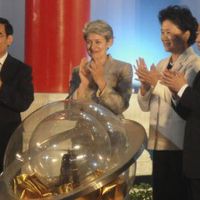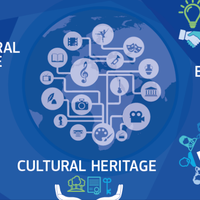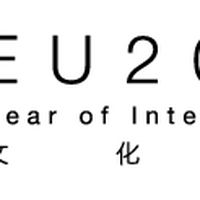UNESCO High Level Forum on Museums adopts Shenzhen Declaration
 “Museums are cutting-edge laboratories of our shared humanity – to protect our heritage, to catalyse new creativity, to help us capture the complexity of our world,” declared UNESCO Director-General Irina Bokova at the High-Level Forum on Museums held in Shenzhen, People’s Republic of China, from 10 to 12 November, 2016.
“Museums are cutting-edge laboratories of our shared humanity – to protect our heritage, to catalyse new creativity, to help us capture the complexity of our world,” declared UNESCO Director-General Irina Bokova at the High-Level Forum on Museums held in Shenzhen, People’s Republic of China, from 10 to 12 November, 2016.
The High Level Forum on Museums was established by UNESCO to bring policy makers and the global museum community together to advance the role of museums in generating social, cultural, educational and economic benefits, which is at the heart of UNESCO’s 2015 Recommendation concerning the Protection and Promotion of Museums and Collections, their Diversity and their Role in Society.
In a message addressed to the participants, President Xi Jinping of the People's Republic of China, declared that “museums are bridges that link our past to the present and future.” Ms Liu Yandong, Vice Premier of the People’s Republic of China, opened the High Level Forum and reaffirmed the many functions of museums in modern societies, stating ”the museum of today is not only an institute for collections, protection, research and display of cultural heritage, but also one for providing public cultural services and social education.” She recalled that China’s 4,692 museums host over 200,000 educational activities every year, and noted that the vitality of museums today requires technical support.
Museums stand at the crossroads of several social challenges today, as a source of jobs and revenues at the heart of the creative economy, fostering a sense of belonging and social cohesion, and as key drivers of international cooperation. They are on the frontline of the fight against illicit trafficking in cultural property and are primary targets in times of conflict. Markus Hilgert, Director, Ancient Near East Museum Pergamonmuseum (Germany), called for museums to "take the lead, within their communities, in creating resilient networks of cultural heritage protection.” Emily Rafferty, President Emerita, The Metropolitan Museum of Art (USA) gave the example of the thousands of New York citizens visiting the MET in the aftermath of 9/11 to highlight the power of museums as unifying forces able to foster a sense of belonging.
The Forum was a major opportunity to help the museum community craft much needed tools to address critical issues. The Shenzhen Declaration adopted at the event calls on all stakeholders to enhance the role and capacities of museums in protecting cultural heritage, adopting ethical and technological standards, and developing cooperation at the international level. It also encourages the full implementation of the 2015 UNESCO Recommendation and explores the possibility of a global museum report. Going forward, the High-Level Forum will serve as an advisory body to the UNESCO Director-General, who called for innovative cooperation to promote museums and to reduce inequalities among them.
The Forum was co-organized with the National Commission of People’s Republic of China to UNESCO, Shenzhen Municipality, Zhi Zhen Art Museum and the State Administration for Cultural Heritage (SACH) of China.
For additional information about the High-Level Forum held in Shenzhen, please visit http://www.unesco.org/new/en/media-services/single-view/news/unesco_high_level_forum_adopts_shenzhen_declaration_and_call/ The Shenzhen Declaration on Museums and Collections is available at http://www.unesco.org/new/fileadmin/MULTIMEDIA/HQ/BPI/EPA/images/media_services/Director-General/Shenzhen-DeclarationENG.pdfSimilar content
posted on
25 Oct 2013
posted on
09 Jun 2016
posted on
14 Dec 2012



